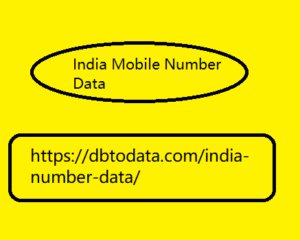How can we customize GPT-3's knowledge base and have the AI maintain a brand-aligned tone of voice? By training the model on a specific dataset (fine-tune training). Let's see what it's about. Alessio Pomaro Alessio Pomaro 10 Mar 2022 •8 min read GPT-3 and personalized training: fine-tune training GPT-3 and personalized training: fine training When you think about the nature of models ( LLM - Large Language Models ) like OpenAI 's GPT-3 , a doubt probably arises.. If training occurs using online data, how can we personalize the knowledge base and give the AI a " tone of voice" that is aligned with the brand? Precisely to meet this concept, OpenAI has implemented the possibility for developers to train GPT-3 on a specific dataset , creating a customized version of the application.
This makes GPT-3 reliable for a wider variety of use cases, and runs the India Mobile Number Data model faster. You can use an existing dataset of any shape and size, or add data incrementally based on user feedback . OpenAI reports two cases of customers using the API, who, thanks to the customization of the training, achieved the following improvements: increasing correct outputs from 83% to 95% , adding new data every week ( incremental ); reducing error rates by 50% . Starting to use personalized training is quite simple, and we will see it in the next paragraphs. Go to the OpenAI documentation GPT-3, as we know, can perform a wide range of tasks using natural language , and thanks to customization it can produce even better results, because it allows more data to be made available for the domain of interest . With a hundred examples ( even less ) you begin to see the benefits of additional training, and performance continues to improve as you add data.

In research published by OpenAI it is shown how with around 100 examples they can improve performance on certain tasks, but also how, by doubling the examples, the quality increases linearly. Growing the accuracy of GPT-3 models by increasing personalized training Growing the accuracy of GPT-3 models by increasing personalized training Customizing GPT-3 improves output reliability, delivering more consistent and accurate results for production use cases. One OpenAI customer said that fine-tune training reduced the frequency of unreliable outputs from 17% to 5% . Additionally, because custom versions of GPT-3 are focused on a specific application, the prompt required to get output from individual API calls can be much shorter, reducing costs and improving latency .
This makes GPT-3 reliable for a wider variety of use cases, and runs the India Mobile Number Data model faster. You can use an existing dataset of any shape and size, or add data incrementally based on user feedback . OpenAI reports two cases of customers using the API, who, thanks to the customization of the training, achieved the following improvements: increasing correct outputs from 83% to 95% , adding new data every week ( incremental ); reducing error rates by 50% . Starting to use personalized training is quite simple, and we will see it in the next paragraphs. Go to the OpenAI documentation GPT-3, as we know, can perform a wide range of tasks using natural language , and thanks to customization it can produce even better results, because it allows more data to be made available for the domain of interest . With a hundred examples ( even less ) you begin to see the benefits of additional training, and performance continues to improve as you add data.

In research published by OpenAI it is shown how with around 100 examples they can improve performance on certain tasks, but also how, by doubling the examples, the quality increases linearly. Growing the accuracy of GPT-3 models by increasing personalized training Growing the accuracy of GPT-3 models by increasing personalized training Customizing GPT-3 improves output reliability, delivering more consistent and accurate results for production use cases. One OpenAI customer said that fine-tune training reduced the frequency of unreliable outputs from 17% to 5% . Additionally, because custom versions of GPT-3 are focused on a specific application, the prompt required to get output from individual API calls can be much shorter, reducing costs and improving latency .


